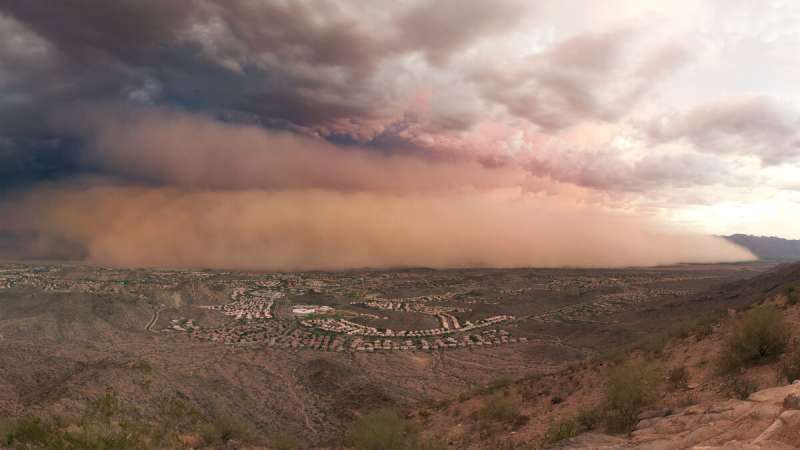Rethinking how valley fever spreads

Coccidioidomycosis, commonly known as valley fever, is a disease caused by two species of fungi from the genus Coccidioides: C. immitis and C. posadasii. Normally found in desert soil, these fungi can cause such symptoms as fatigue, coughs, headaches, and fevers when they colonize human lungs.
Because Coccidioides resides in soil, researchers and public health officials have often assumed that dust storms spread spores and cause infections. But a new study by Andrew Comrie refutes this long-held belief by showing that neither past literature nor his own analysis supports a reliable relationship between dust storms and coccidioidomycosis outbreaks.
The Tempest from Tehachapi, a historic dust storm that swept through Kern County, California, in 1977, may have solidified the link between dust storms and coccidioidomycosis in scientific literature. This storm stirred up soil from as deep as 15 centimeters and was followed by a spike in coccidioidomycosis cases. Studies of other dust storms, however, have failed to show a consistent connection. In a recent study, scientists measured concentrations of airborne Coccidioides before, during, and after a major 2015 dust storm in Arizona and found higher concentrations before the storm than at any other time.
In addition to reviewing past studies, Comrie performed his own analysis using a technique called compositing, also known as superposed epoch analysis. He analyzed around 100 dust storms that occurred in Maricopa County, Arizona, and Kern County, California, looking for disease spikes in each of the 12 months following each individual storm. Neither county experienced significant increases in valley fever cases following the storms. Tweaking his analysis to examine coccidioidomycosis cases on a weekly basis instead of monthly and to focus on individual seasons when dust storms are frequent did not change Comrie's conclusion.
Coccidioides spores are unlikely to survive for long on the harsh surface of the desert, perhaps explaining why dust storms that disturb only superficial soil don't usually spread the fungus. Instead, places where soil has recently been disrupted, like animal burrows or construction sites, could be sources of infectious spores. Public health officials may need to reconsider their messages to the public in light of these findings.
More information: Andrew C. Comrie, No Consistent Link Between Dust Storms and Valley Fever (Coccidioidomycosis), GeoHealth (2021). DOI: 10.1029/2021GH000504
Provided by American Geophysical Union
This story is republished courtesy of Eos, hosted by the American Geophysical Union. Read the original story here.




















